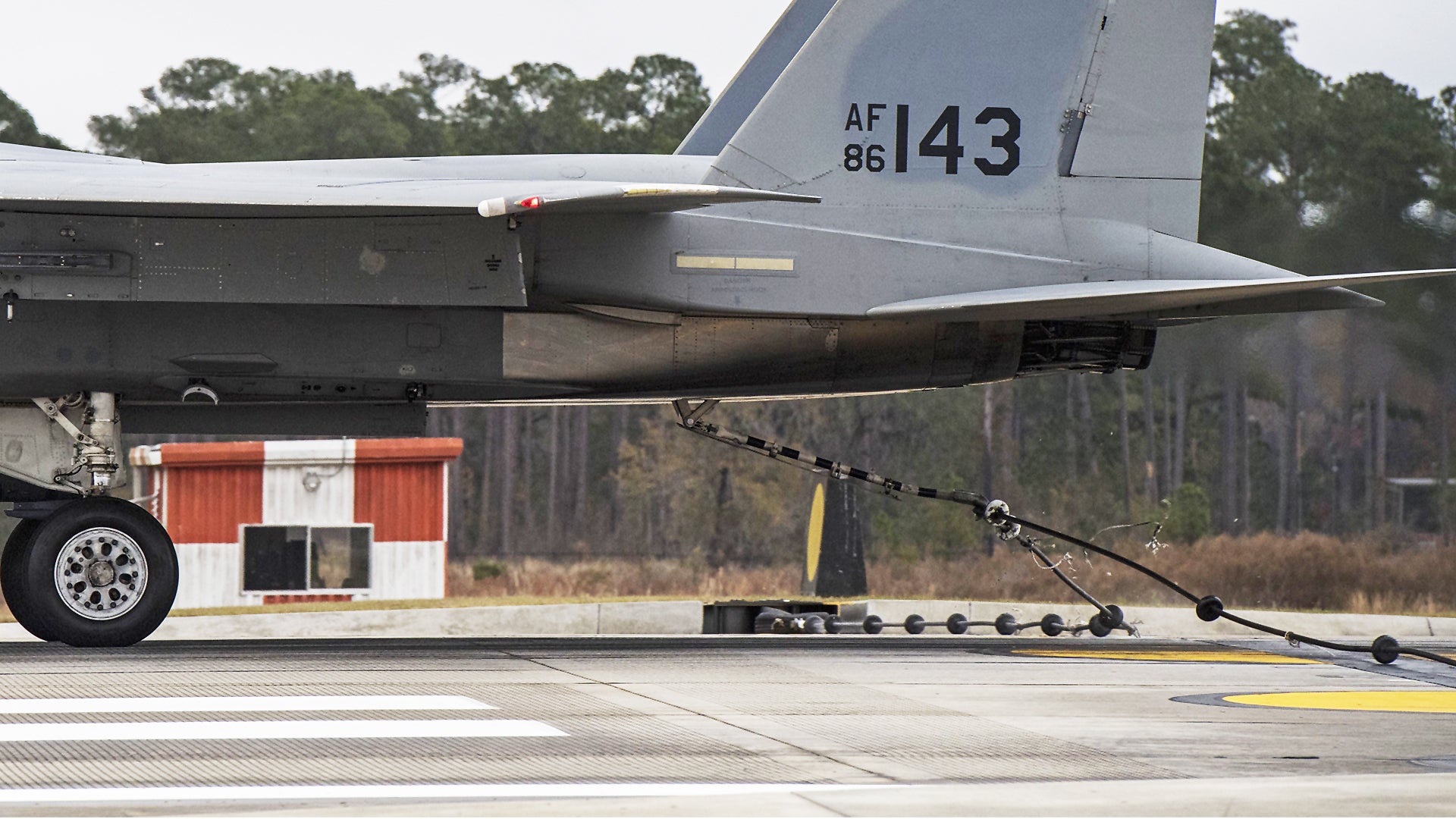In what has to be one of the craziest military aviation incidents of the young new year, two USAF F-15C/D Eagles made emergency landings at Kadena Air Base in Okinawa, Japan on January 15th, 2019. What made the incident so unique is that both jets landed on the same runway in the opposite direction
of one another, catching the arresting cables at each end of the runway and coming to a rest face to face with a big expanse of runway between them. There are parallel runways at Kadena, but the north runway was closed for repairs and its arresting cables were inoperative when the separate in-flight emergencies occurred on the morning of the 15th. You can see just how violent an emergency barrier engagement can be for an F-15 in this prior piece of ours. The strange occurrence was first reported on by the Okinawa Times.
Clearly, there is a very real risk to such an operation. If the aircraft’s hook skips the cable and the plane cannot go around for another try—which is unlikely if the jet was stricken by a malfunction serious enough that it would require an arrested landing—the aircraft could careen into the other jet stopped farther down the runway. The BAK-12 arresting gear at Kadena is located roughly 1,500 feet beyond the threshold of each end of the runway.

It sounds like the second troubled F-15 had no other divert fields with a cable that it could reach. The only other option would be an ejection, which is far from risk-free for the pilot and would result in the total loss of the aircraft. So with no better alternative, it seems that clearing the runway of personnel and preparing the pilot to eject if they did not catch the cable was the best of a handful of bad options.
What remains unknown is why the second F-15 couldn’t have used nearby MCAS Futenma which has an arresting gear system as well, but also has just one runway to work with. The Okinawa Times piece notes that a flight of four F-15s had to divert to the MCAS Futenma after the double arrested landing at Kadena, so maybe sending those functioning aircraft to Okinawa’s Naha Airport, which is home to Japanese F-15Js, or another base in the region wasn’t possible. There’s no arresting gear at Naha Airport, so if one of the four Eagles required it during landing they would be out of luck.
The dual runway closure at Kadena Air Base lasted about an hour, ending at around 11:20am local time once both aircraft were cleared off the runway and the arresting gear was rest.
It’s worth mentioning that it is possible that the F-15s landed pointing away from each other instead of at each other, with the second jet flying over the first before touchdown. Depending on the aircraft’s emergency, this may have been an option, but apparently, eyewitnesses said it happened the opposite way as previously described. Either way, the incident is totally out of the ordinary.

Kadena’s north runway started a six-month closure on January 8th, 2019. This means the air base will have to get by with a single runway for an extended period of time—a challenging reality for one of America’s busiest overseas air bases.
As we noted in a previous piece about Kadena’s capabilities and its unique place in a turbulent neighborhood, F-15s reign supreme at the base and are literally the ‘tip of the spear’ of American combat power in the region:
“There are two F-15C/D squadrons, the 44th FS and 67th FS, based at Kadena and both are part of the 18th Wing. Most F-15C/D squadrons have 18 primary aircraft and three backup aircraft in inventory. Only one other F-15C/D “active” USAF squadron exists, the 493rd FS based in RAF Lakenheath, the UK, the rest are all Air National Guard units.”
The base is also home to a huge variety of other aircraft, including HH-60Gs, KC-135Rs, E-3s, and pretty much every strategic surveillance platform in the USAF’s inventory as well as other fighters that deploy to the installation on a rotational basis.

On June 10th, 2018 an F-15C from Kadena crashed into the Pacific ocean. Thankfully, the pilot was able to eject and was rescued alive. But even though the F-15C/D community boasts better mission-capable rates than their 5th generation fighter brethren, the youngest airframes in the fleet are now 32 years old. The USAF will have to decide to spend money on significant upgrades to these aircraft in the coming decade or to outright replace them with another airframe. This replacement aircraft could be upgraded F-16s, F-35As, or F-15Xs. We will be revisiting this issue in the near future, so stay tuned for that special feature.

Regardless of what’s to come, those must have been some ridiculously tense moments on the airfield as controllers cleared a crippled aircraft to land on a fouled runway.
It’s definitely a first of hearing of such an incident for this writer!
Thankfully it worked and everyone made it out alive with a crazy story to tell.
Contact the author: Tyler@thedrive.com
